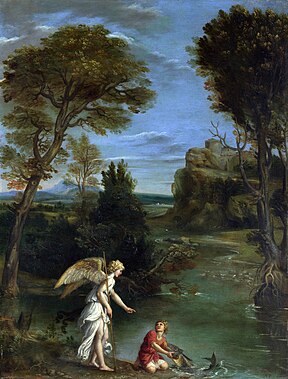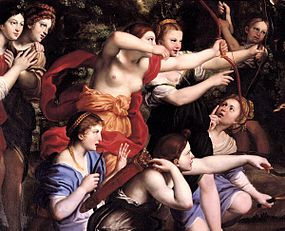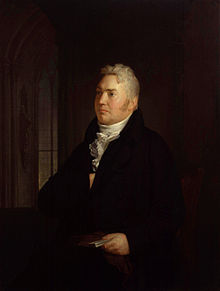Dear Zazie, Here is today’s Lovers’ Chronicle from Mac Tag dedicated to his muse. Rhett
The Lovers’ Chronicle
Dear Muse,
© copyright 2020 mac tag/cowboy coleridge all rights reserved
© copyright 2019 mac tag/cowboy coleridge all rights reserved
therefore
all days shall be ours
wherever we go
whatever we do…
“Take me someplace.”
of course
the hard part
will be choosin’
where to go
luckily,
it does not matter
anywhere we go
will be special
because we are there
……
whenever
life’s stress
encroaches
there whispers
the solace of you
so i stand,
on a chilly autumn night
with the High Plains sky
spreadin’ all around me
i open my arms wide
and bless the fortunes
that brought me you
© copyright 2018 mac tag/cowboy coleridge all rights reserved
| Domenico Zampieri known as Domenichino |
|
|---|---|

St. John the Evangelist, c. 1621–29
|
|
Today is the birthday of Domenico Zampieri, known as Domenichino for his shortness (Bologna October 21, 1581 – April 6, 1641 Naples); Baroque painter of the Bolognese or Carracci School of painters.
Gallery

The Sibyl og Cumae, at the Borghese Gallery





-

Portrait of Guido Reni, 1603-04
-

Last Communion of St. Jerome, 1614, Pinacoteca Vaticana
-

Detail from Diana and her Nymphs, 1616–17
-

Saint Cecilia Playing the Viol, 1618
-

River landscape with Boatmen and Fisherman, an elegant couple walking by the shore
-

Madonna and Child with St Petronius and St John the Evangelist
-

Apparition of the Virgin and Child and San Gennaro at the Miraculous Oil Lamp, 1637–38, Cathedral of Naples
| Samuel Taylor Coleridge | |
|---|---|

Coleridge in 1795
|
|
Today is the birthday of Samuel Taylor Coleridge (Ottery St. Mary, Devon; 21 October 1772 – 25 July 1834 Highgate, Middlesex); poet, literary critic and philosopher who, with his friend William Wordsworth, was a founder of the Romantic Movement in England and a member of the Lake Poets. He wrote the poems The Rime of the Ancient Mariner and Kubla Khan, as well as the major prose work Biographia Literaria. Coleridge coined many familiar words and phrases, including suspension of disbelief. He was a major influence on Emerson and American transcendentalism.
Throughout his adult life Coleridge had crippling bouts of anxiety and depression; it has been speculated that he had bipolar disorder, which had not been defined during his lifetime. He was physically unhealthy, which may have stemmed from a bout of rheumatic fever and other childhood illnesses. He was treated for these conditions with laudanum, which fostered a lifelong opium addiction.
His friends reportedly lamented the fact that he had wasted much of his talent. They considered him the most brilliant writer and thinker they had ever known, but thought he had accomplished so little. Near the end of his life, his friend Charles Lamb wrote of Coleridge, “His face when he repeats his verses hath its ancient glory, an Archangel a little damaged.” Hmm, reminds me of someone…


At Jesus College, Coleridge was introduced to political and theological ideas then considered radical, including those of the poet Robert Southey. Coleridge joined Southey in a plan, soon abandoned, to found a utopian commune-like society, called Pantisocracy, in the wilderness of Pennsylvania. In 1795, the two friends married sisters Sarah and Edith Fricker, in St Mary Redcliffe, Bristol, but Coleridge’s marriage with Sarah proved unhappy. He grew to detest his wife, whom he only married because of social constraints. He eventually separated from her.

Verse
And what if
In your sleep
You dreamed
And what if
In your dream
You went to heaven
And there plucked a strange and beautiful flower
And what if
When you awoke
You had that flower in your hand
Ah, what then?
- Therefore all seasons shall be sweet to thee,
- Whether the summer clothe the general earth
- With greenness, or the redbreast sit and sing
- Betwixt the tufts of snow on the bare branch
- Of mossy apple-tree, while the nigh thatch
- Smokes in the sun-thaw; whether the eave-drops fall
- Heard only in the trances of the blast,
- Or if the secret ministry of frost
- Shall hang them up in silent icicles,
- Quietly shining to the quiet Moon.
- The frost performs its secret ministry,
Unhelped by any wind.- “Frost at Midnight”, l. 1 (1798)
- Forth from his dark and lonely hiding place
(Portentous-sight!) the owlet Atheism,
Sailing an obscene wings athwart the noon,
Drops his blue-fringèd lids, and holds them close,
And hooting at the glorious sun in Heaven,
Cries out, “Where is it?”- “Fears in Solitude”, l. 81 (1798).
- And the Devil did grin, for his darling sin
Is pride that apes humility.- “The Devil’s Thoughts”, st. 6 (1799).
All thoughts, all passions, all delights,
Whatever stirs this mortal frame,
All are but ministers of Love,
And feed his sacred flame.
- “Love”, st. 1 (1799).
And in Life’s noisiest hour,
There whispers still the ceaseless Love of Thee,
The heart’s Self-solace and soliloquy.
You mould my Hopes, you fashion me within.
- “The Presence of Love” (1807), lines 1-4.
And looking to the Heaven, that bends above you,
How oft! I bless the Lot, that made me love you.
- “The Presence of Love” (1807), lines 10-11.
Beneath this sod
A poet lies, or that which once seemed he —
Oh, lift a thought in prayer for S.T.C!
That he, who many a year, with toil of breath,
Found death in life, may here find life in death.
- “Epitaph”, written for himself (1833).

And on this day in 1940 – The first edition of the Ernest Hemingway novel For Whom the Bell Tolls is published.

First edition cover
|
|
For Whom the Bell Tolls tells the story of Robert Jordan, a young American in the International Brigades attached to a republican guerrilla unit during the Spanish Civil War. As a demolition man, he is assigned to blow up a bridge during an attack on the city of Segovia.
Ernest Hemingway wrote For Whom the Bell Tolls in Havana, Cuba; Key West, Florida; and Sun Valley, Idaho in 1939. In Cuba, he lived in the Hotel Ambos-Mundos where he worked on the manuscript. The novel was finished in July 1940 and published in October. The characters in the novel include those who are purely fictional, those based on real people but fictionalized, and those who were actual figures in the war. Set in the Sierra de Guadarrama mountain range between Madrid and Segovia, the action takes place during four days and three nights. For Whom the Bell Tolls became a Book of the Month Club choice, sold half a million copies within months, was nominated for a Pulitzer Prize, and became a literary triumph for Hemingway. The first edition print run was 75,000 copies priced at $2.75.
The book’s title is taken from the metaphysical poet John Donne’s series of meditations and prayers on health, pain, and sickness (written while Donne was convalescing from a nearly fatal illness) published in 1624 as Devotions upon Emergent Occasions, specifically Meditation XVII. Hemingway quotes part of the meditation (using Donne’s original spelling) in the book’s epigraph, which in turn refers to the practice of funeral tolling:
- No man is an Iland, intire of it selfe; every man is a peece of the Continent, a part of the maine; if a Clod bee washed away by the Sea, Europe is the lesse, as well as if a Promontorie were, as well as if a Mannor of thy friends or of thine owne were; any mans death diminishes me, because I am involved in Mankinde; And therefore never send to know for whom the bell tolls; It tolls for thee.
I am no romantic glorifier of the Spanish woman, nor did I ever think of a casual piece as anything much other than a casual piece in any country. But when I am with Maria I love her so that I feel, literally, as though I would die and I never believed in that or thought that it could happen.
- Ch. 13
What a business. You go along your whole life and they seem as though they mean something and they always end up not meaning anything. There was never any of what this is. You think that is one thing you will never have. And then, on a lousy show like this, co-ordinating two chicken-crut guerilla bands to help you blow a bridge under impossible conditions, to abort a counter-offensive that will probably already be started, you run into a girl like this Maria.
- Ch. 13
If we win here we will win everywhere. The world is a fine place and worth the fighting for and I hate very much to leave it.
- Ch 43
For him it was a dark passage which led to nowhere, then to nowhere, then again to nowhere, once again to nowhere, always and forever to nowhere, heavy on the elbows in the earth to nowhere, dark, never any end to nowhere, hung on all time always to unknowing nowhere, this time and again for always to nowhere, now not to be borne once again always and to nowhere, now beyond all bearing up, up, up and into nowhere, suddenly, scaldingly, holdingly all nowhere gone and time absolutely still and they were both there, time having stopped and he felt the earth move out and away from under them.
- Ch. 13
- Today is only one day in all the days that will ever be. But what will happen in all the other days that ever come can depend on what you do today. It’s been that way all this year. It’s been that way so many times. All of war is that way.
- That tomorrow should come and that I should be there.
Mac Tag

No Comments on "The Lovers’ Chronicle 21 October – shall we go – art by Domenichino – verse by Samuel Taylor Coleridge – publication of For Whom the Bell Tolls"